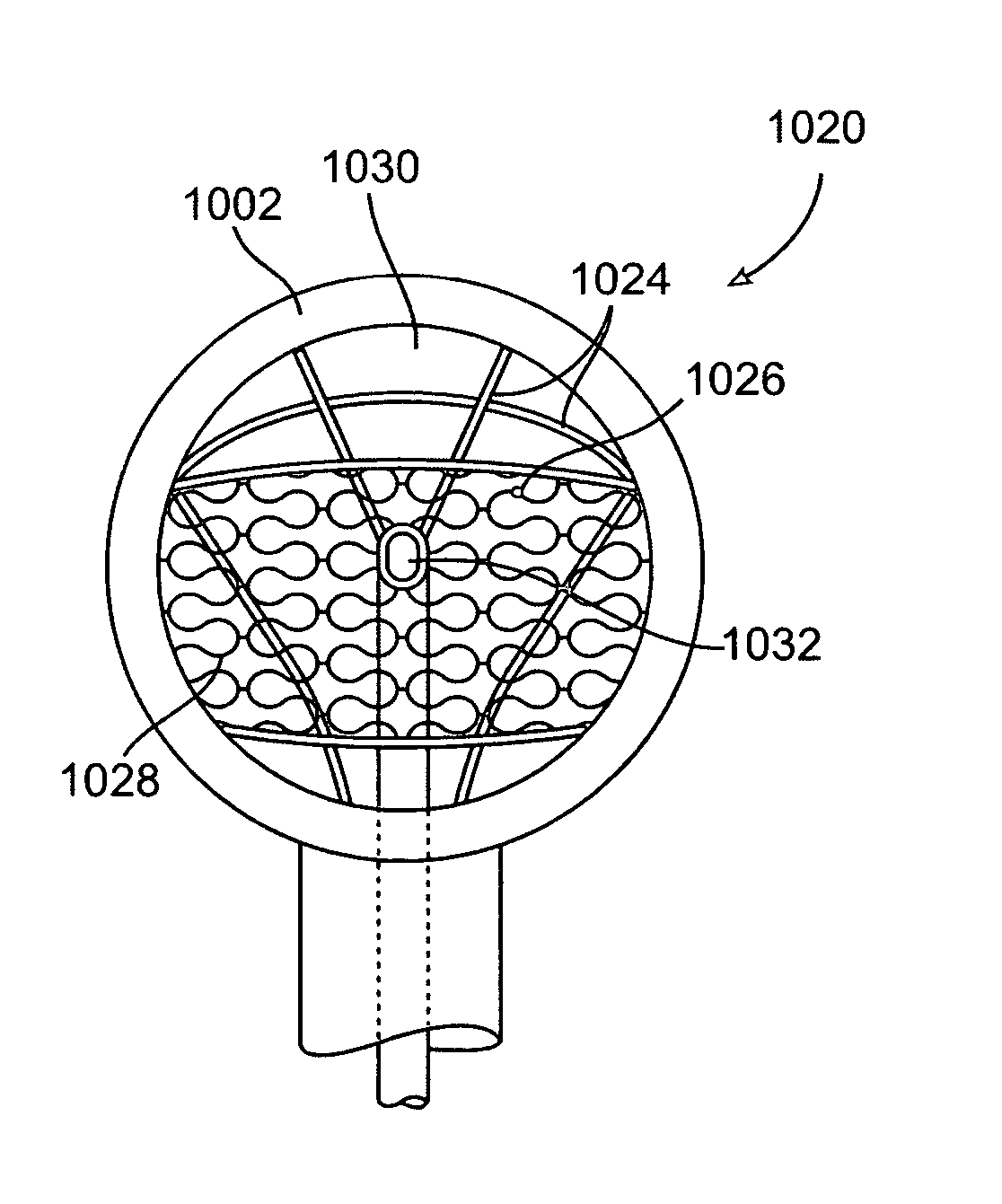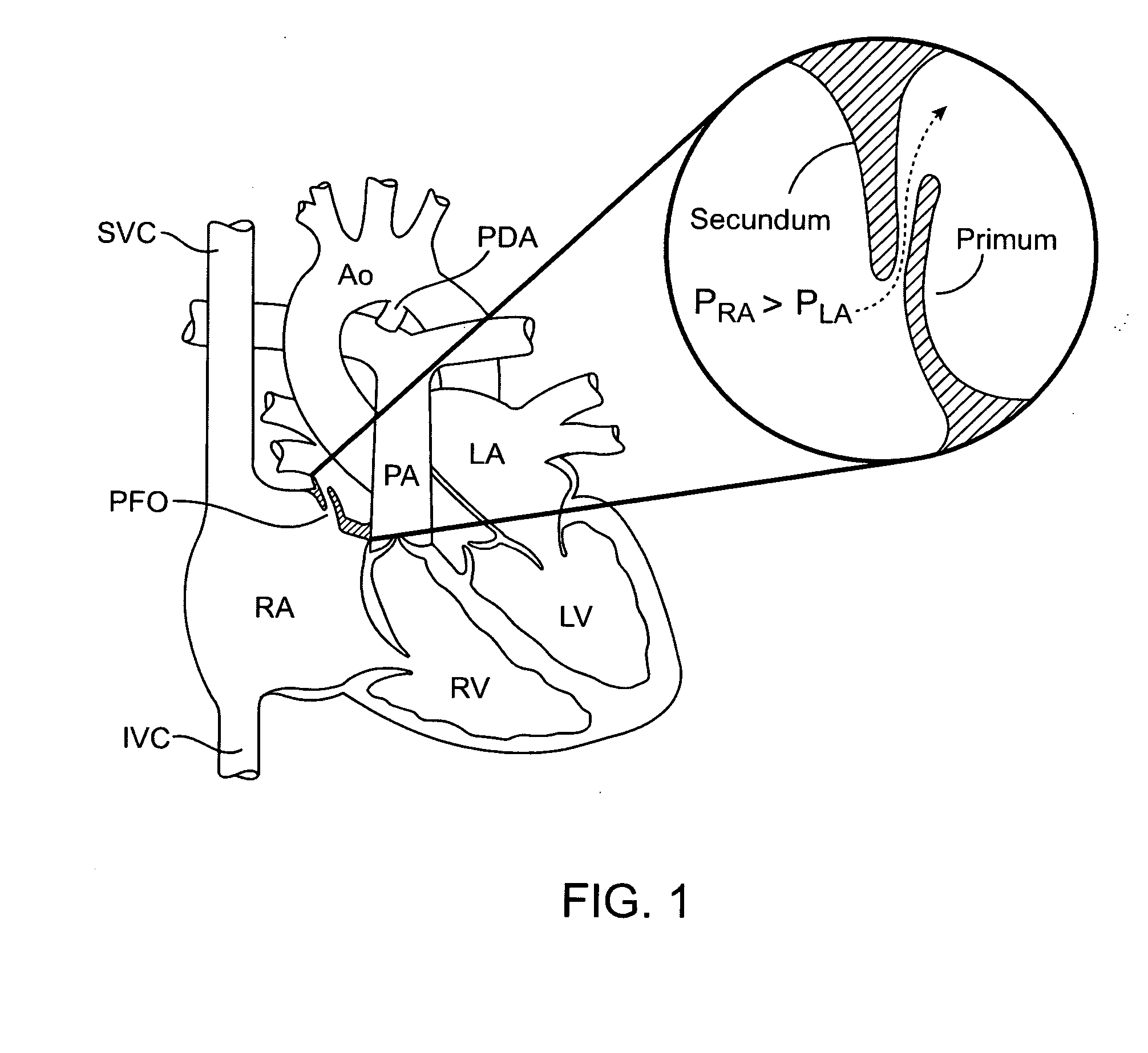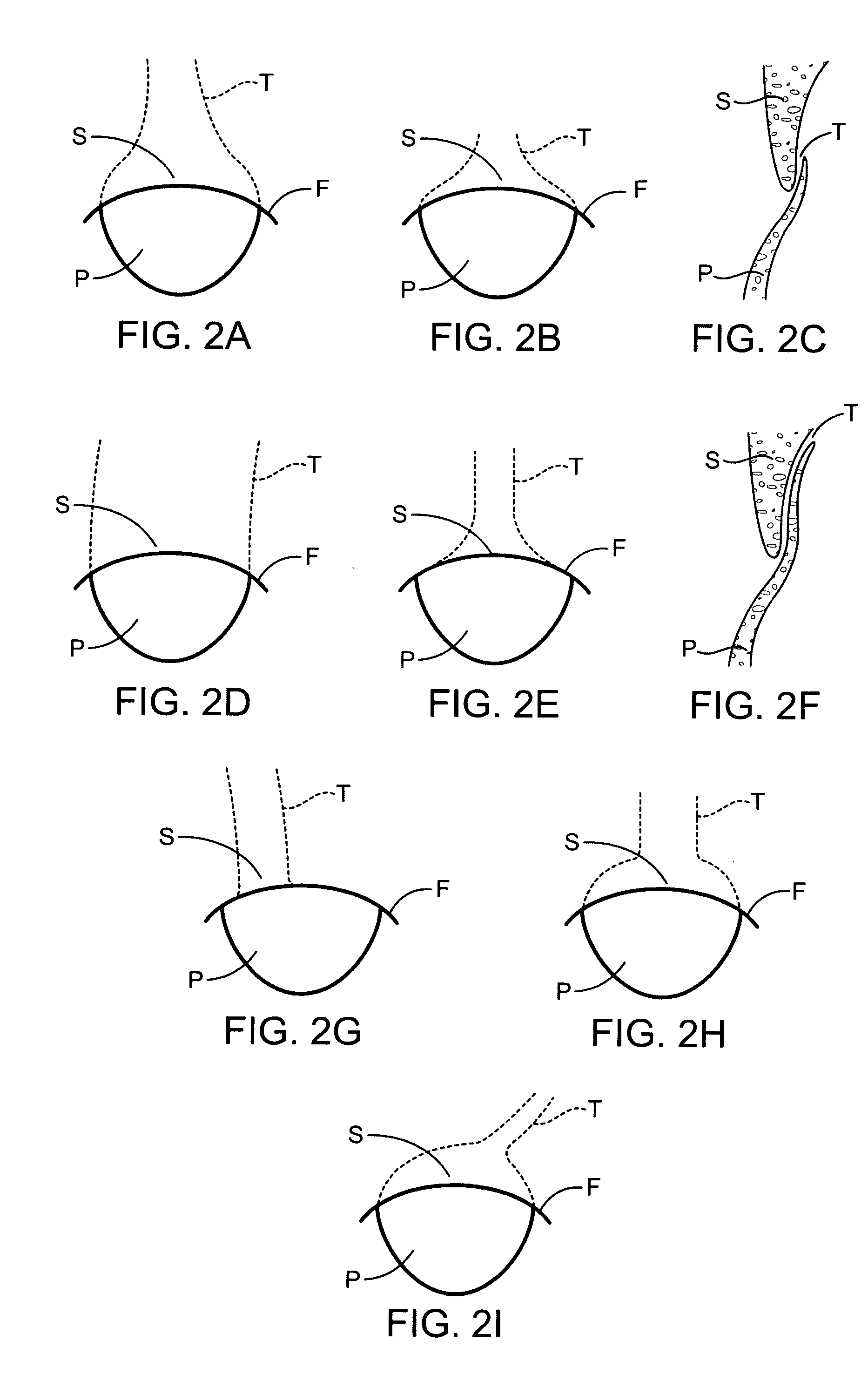Methods and electrode apparatus to achieve a closure of a layered tissue defect
a tissue defect and electrode technology, applied in the field of positioning closure devices, can solve the problems of complications high cost and potential side-effects of such a procedure, and the general invasiveness of interventional therapies for defect closure, so as to improve the engagement of the housing
- Summary
- Abstract
- Description
- Claims
- Application Information
AI Technical Summary
Benefits of technology
Problems solved by technology
Method used
Image
Examples
Embodiment Construction
[0092] Devices, systems, and methods of the present invention generally provide for treatment of anatomic defects in human tissue, such as a patent foramen ovale (PFO), atrial septal defect (ASD), ventricular septal defect (VSD), left atrial appendage (LAA), patent ductus arteriosis (PDA), vessel wall defects and / or the like through application of energy. The present invention is particularly useful for treating and fusing layered tissue structures where one layer of tissue at least partly overlaps a second layer of tissue as found in a PFO. Therefore, although the following descriptions and the referenced drawing figures focus primarily on treatment of PFO, any other suitable tissue defects, such as but not limited to those just listed, may be treated in various embodiments.
[0093] I. PFO ANATOMY. As mentioned in the background section above, FIG. 1 is a diagram of the fetal circulation. The foramen ovale is shown PFO, with an arrow expanded view demonstrating that blood passes fro...
PUM
 Login to View More
Login to View More Abstract
Description
Claims
Application Information
 Login to View More
Login to View More - R&D
- Intellectual Property
- Life Sciences
- Materials
- Tech Scout
- Unparalleled Data Quality
- Higher Quality Content
- 60% Fewer Hallucinations
Browse by: Latest US Patents, China's latest patents, Technical Efficacy Thesaurus, Application Domain, Technology Topic, Popular Technical Reports.
© 2025 PatSnap. All rights reserved.Legal|Privacy policy|Modern Slavery Act Transparency Statement|Sitemap|About US| Contact US: help@patsnap.com



